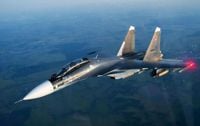Over the past week, NATO fighter jets stationed in the Baltic states scrambled three separate times to intercept and escort Russian military aircraft violating established flight regulations, according to reports from Lithuania's Ministry of Defence and covered extensively by broadcasters such as LRT and Censor.NET. The incidents, which unfolded on September 30 and October 1, 2025, have drawn renewed attention to the tense and closely monitored airspace over the Baltic Sea, where NATO’s Air Policing Mission operates as a bulwark against potential security threats from Russia.
On September 30, NATO’s rapid response was triggered twice in a single day. According to Lithuania’s Ministry of Defence, as reported by LRT, two Russian AN-12 transport aircraft were detected flying from mainland Russia toward the Kaliningrad region. Though the aircraft had their radar transponders switched on—a basic safety requirement—they lacked approved flight plans. Instead, they maintained only radio contact with the Regional Flight Control Centre (RSVS), a detail confirmed by multiple sources including Censor.NET and UNN. This omission of flight plans, while maintaining transponder activity and radio contact, is a violation of international aviation safety protocols, designed to ensure transparency and prevent mid-air collisions in the crowded Baltic skies.
Later that same day, NATO fighters scrambled again to intercept a Russian AN-72 transport aircraft. This aircraft, too, had its transponder active but was flying without a flight plan. According to Lithuania’s Defence Ministry, as cited by LRT, the AN-72 maintained communication with the regional control center. However, the situation escalated when four SU-30 and two MiG-31 fighter jets, which took off from Kaliningrad to escort the AN-72, were found to be flying without transponders, without flight plans, and without any radio communication at all. This complete absence of identification measures is considered a serious breach of aviation norms and a potential hazard to civil and military air traffic alike.
The following day, October 1, NATO’s Baltic Air Policing mission was again called into action. This time, alliance fighters intercepted a Russian SU-35 fighter jet and identified a SU-24MR tactical reconnaissance aircraft. According to LRT and corroborated by other outlets, the SU-24MR was flying without an activated transponder, without a flight plan, and without maintaining radio contact—essentially invisible to civilian air traffic control systems. Such actions, NATO officials argue, increase the risk of accidental encounters and misunderstandings in a region already marked by heightened tensions.
These recent events are part of a broader pattern of Russian military flights in the Baltic region that disregard key international aviation safety rules. The Lithuanian Ministry of Defence, in statements reported by LRT, emphasized that NATO’s Air Policing Mission is designed precisely to counter such threats and to ensure the safety and stability of the region’s airspace. The mission, which operates out of Lithuania and Estonia, provides for the constant monitoring of the skies over the Baltic states, and its pilots are trained to respond swiftly to any aircraft that fail to comply with international flight standards.
Incidents like these are not isolated. On September 19, just weeks before the latest series of interceptions, three Russian MiG-31 fighter jets entered Estonian airspace without authorization, remaining for roughly 12 minutes. Italian F-35 fighter jets, stationed at Ämari Air Base as part of NATO’s Baltic Air Policing mission, were scrambled to escort the Russian aircraft out of Estonian airspace, preventing further violations. That same day, Russian fighter jets reportedly violated the security zone of the Polish Petrobaltic drilling platform in the Baltic Sea, and earlier, two dozen Russian UAVs were detected over Polish territory. According to RBC-Ukraine, the Kremlin has consistently denied any wrongdoing, asserting that Russian military aircraft operate “strictly within international rules.”
NATO, however, sees things differently. The alliance has vowed to “respond decisively” to Russian violations of Allied airspace, a stance echoed by officials in the Baltic region. According to statements from Lithuanian and Estonian authorities, such episodes underscore the need for ongoing vigilance and close coordination between NATO and the Baltic states. The region’s proximity to the Russian exclave of Kaliningrad—a heavily militarized zone—makes it a focal point for both routine military exercises and more provocative aerial maneuvers.
The importance of these air policing missions cannot be overstated. As noted by several outlets, including LRT and UNN, the systematic approach to monitoring Baltic airspace is a direct response to increasing Russian military activity and the need to react prudently to violations or non-standard maneuvers. Each interception is conducted in accordance with international rules and communication protocols, with the aim of avoiding escalation while maintaining the integrity of NATO airspace.
In the wake of the most recent incidents, the Estonian Foreign Minister remarked that the intrusion of Russian military aircraft into the country’s airspace brings the Baltic states “closer to armed conflict than ever in recent years.” While such a statement may sound alarmist, it reflects the deep-seated anxieties in the region, where memories of past confrontations with Russia remain fresh and unresolved. The ongoing pattern of Russian flights without proper identification, transponders, or radio contact is seen by many as a deliberate provocation, testing the readiness and resolve of NATO’s air defenses.
For their part, NATO officials stress that their actions are purely defensive and in line with established international norms. The alliance’s air policing mission is not about confrontation, they argue, but about ensuring the safety of all who use the region’s airspace—civilian and military alike. By intercepting and escorting unidentified or non-compliant aircraft, NATO sends a clear message that it will not tolerate violations of its airspace or the rules that govern international aviation.
As the standoff over the Baltic skies continues, the world watches closely. Each incident, each scramble, each radio call—or lack thereof—serves as a reminder of the fragile balance that defines security in Eastern Europe. Whether these encounters escalate or remain routine depends on the willingness of all parties to adhere to the rules and to respect the boundaries that keep the peace, however uneasy, in one of the world’s most strategically sensitive regions.

